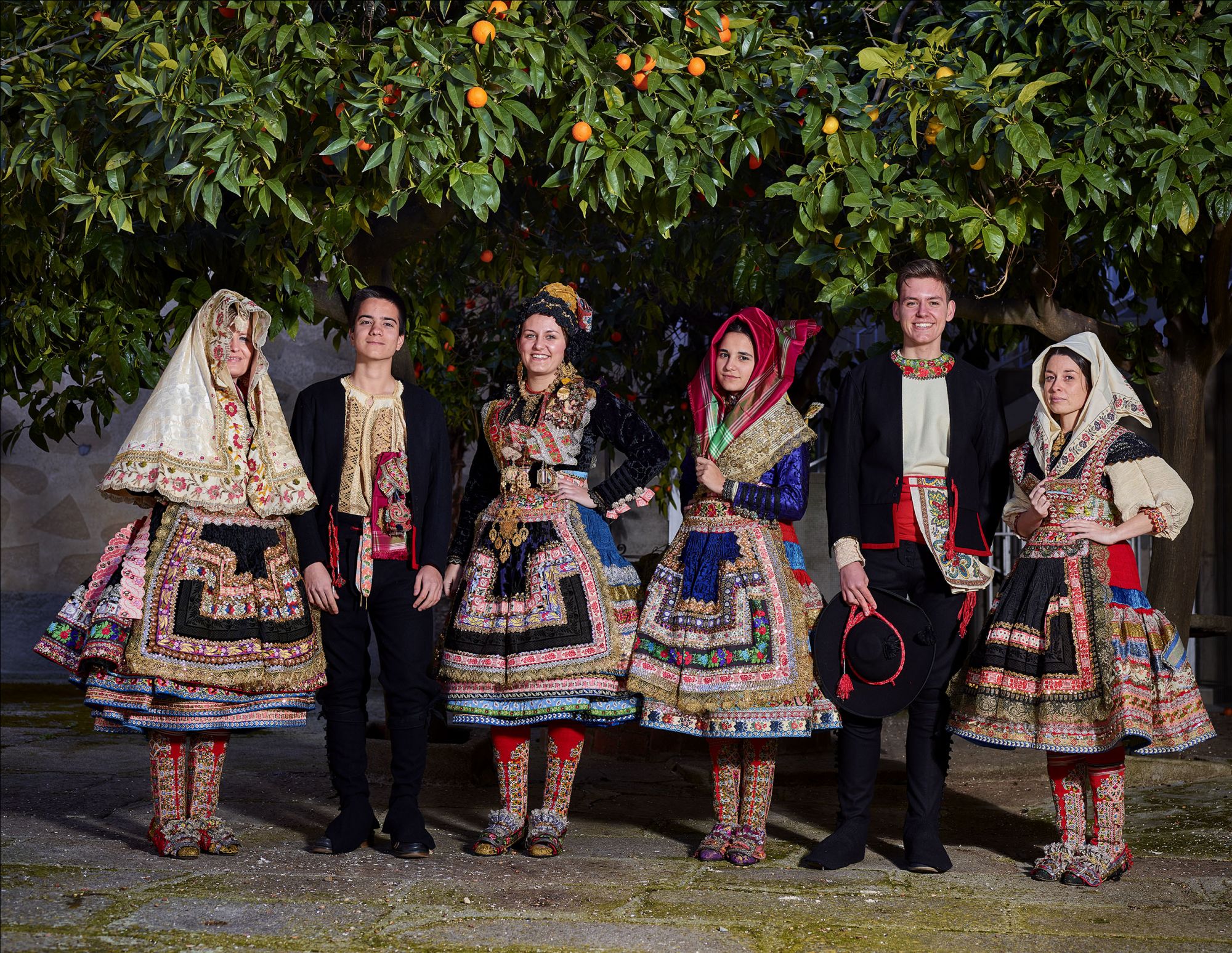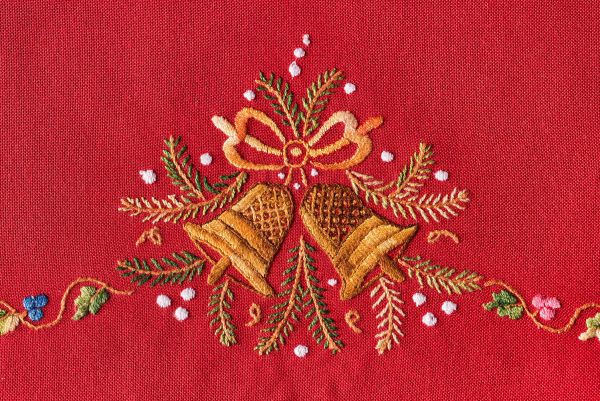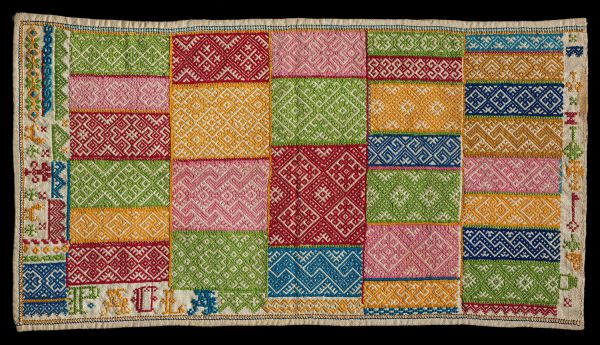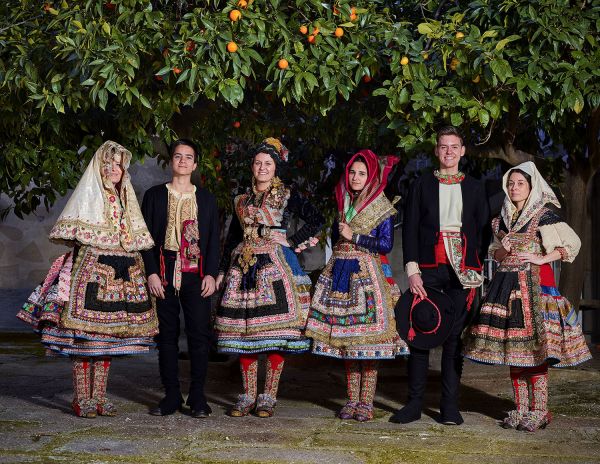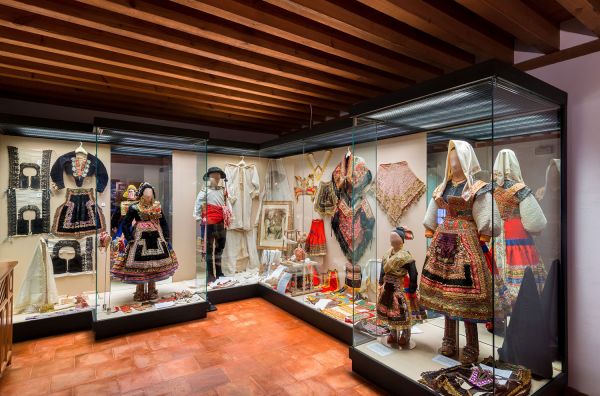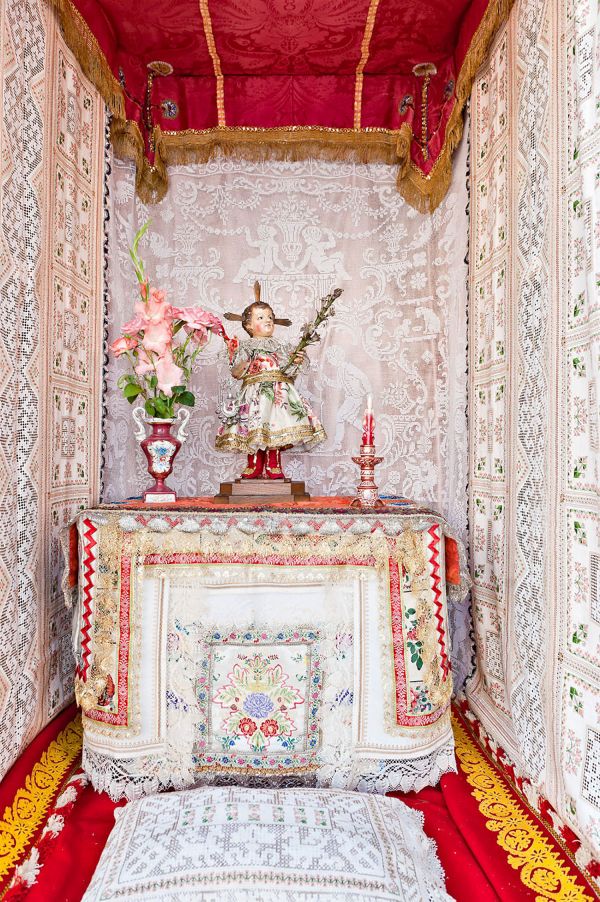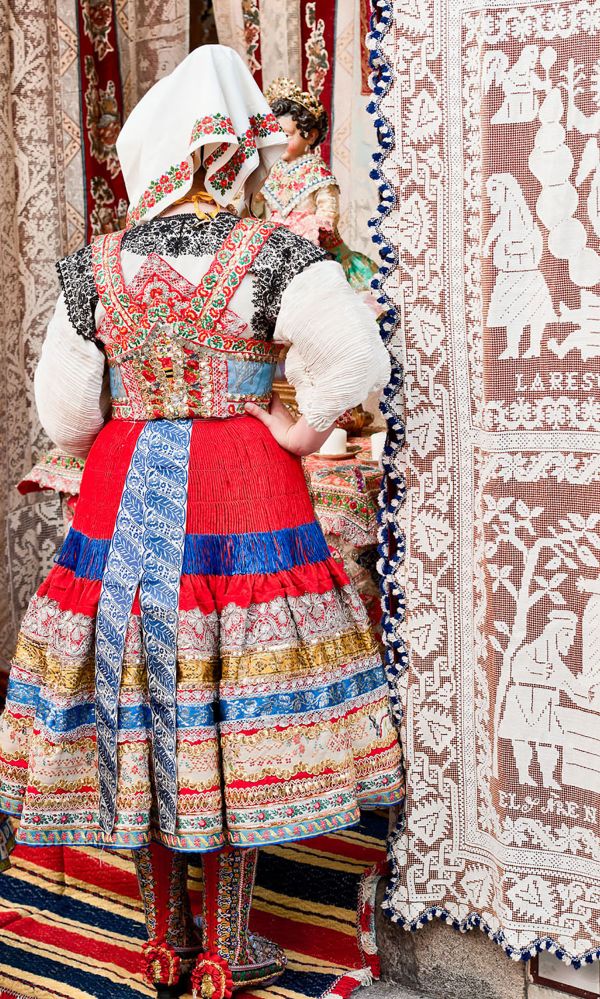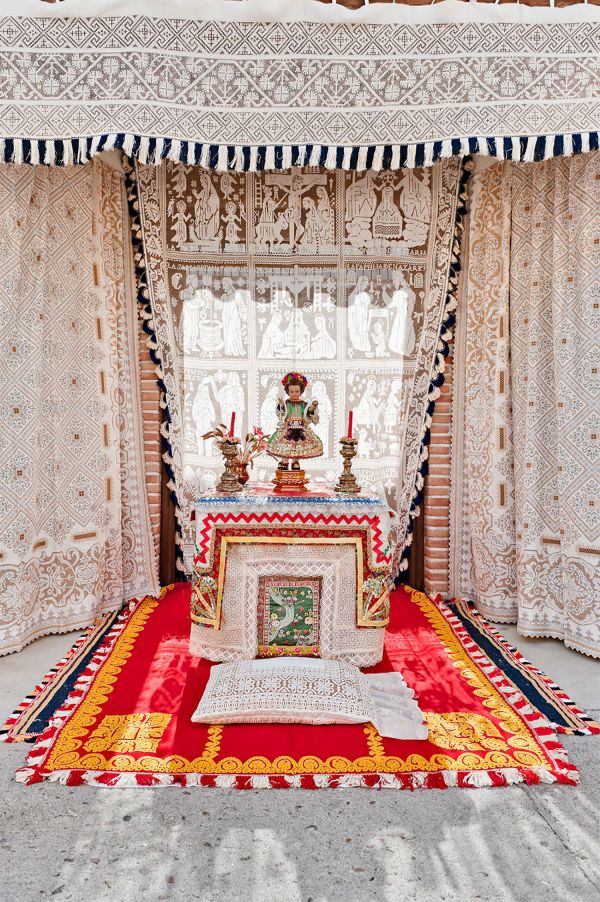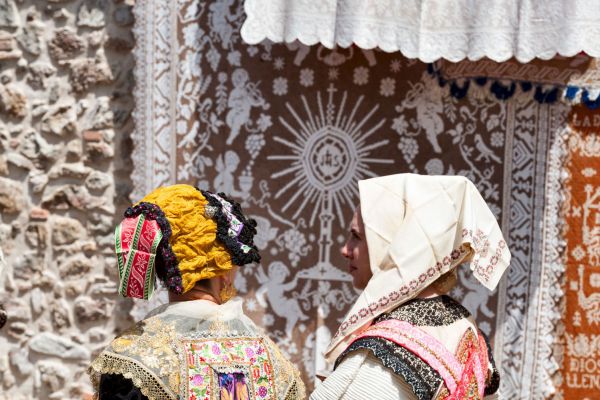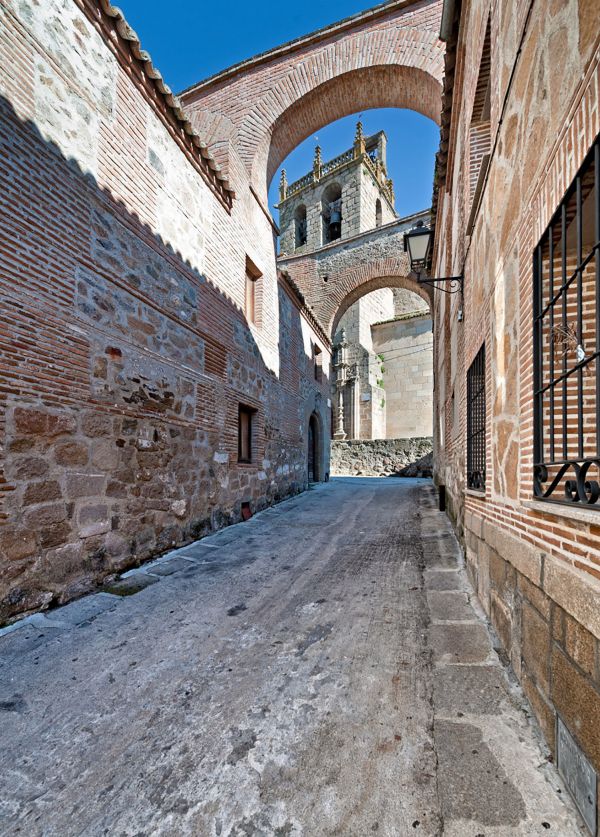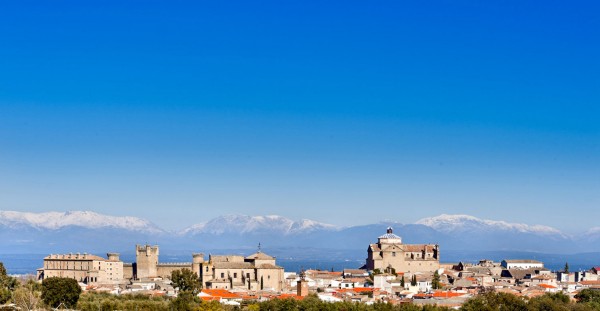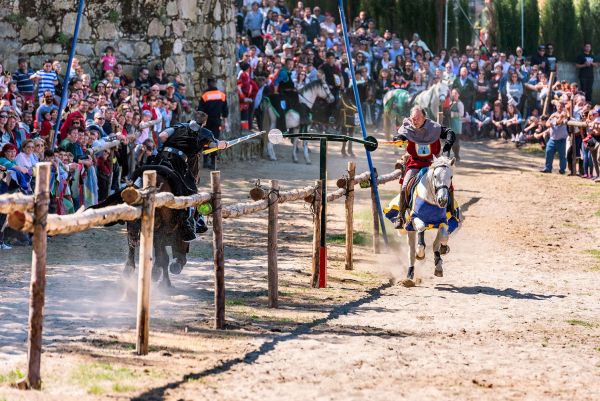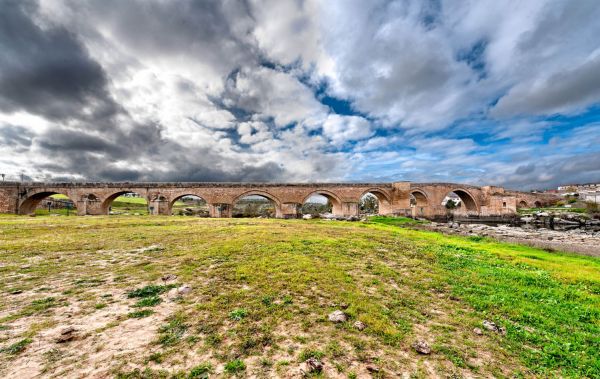Lands of embroidery and ceramics
Toledo
This time, we’re travelling towards the border between Castilla-La Mancha with Ávila and Cáceres to, after crossing the water reserve of the Soto del Río Guadyerbas and Arenales del Baldío de Velada, reach Navalcán.
The environment is a natural space abundant in oaks, broom, lavender, wild olive trees. cork oak and flax-leaved daphne. The Birds Route leaves from the town: a circular trail running through meadows and the banks of the Navalcán reservoir, and an excellent spot for watching birds such as herons, griffin vultures, cormorants, geese, mallards or cranes.
The route, heading south, crosses vast agricultural zones to reach Oropesa. Among these numerous heritage attractions, there is the imposing castle, whose profile is outlined on the peaks of the Sierra de Gredos and is home to the Parador Hotel.
The castle we can see from the road is actually two castles -the old and the new- joined together. The old castle, also known as the Álvarez de Toledo Castle, was built by the Arabs between the 12th and 13th centuries on an originally Roman construction. The new castle, or Álvarez de Toledo Palace, is noteworthy due to its size and location, facing north, and was built in 1402.
There is a big square inside, a weapons courtyard that comprises a large rectangle for housing all the fort’s infrastructure and where cultural activities currently take place. Protecting this square, there is a 25-metre high keep, which can be climbed via a narrow ramp with steps, which also provides access to the whole chemin de ronde and the other towers. The Oropesa castle staircase is one of the most impressive of all Spanish castles. Inside the four-storey tower, some made of wood and connected by staircases of varying condition, a really original and unique defensive system can be observed.
Together, the castles make up one of the most beautiful forts in the region.
The castle has been a Parador Hotel since 1930 –it was the first Parador-monument of the chain–, therefore the visiting hours and options for enjoying it are extended: you can sleep or eat in its magnificent restaurant while enjoying some stunning views of the Gredos mountains.
However, there’s plenty more to see in Oropesa.
Navarro square is the town’s nerve centre. Without leaving the square, we will see the slender watchtower, Neo-Mudéjar-style from 1901; the old, 15th-century municipal granary, which is now home to the Town Hall; and on one side of the square, the old, modernist library, with an upper façade featuring Talavera tile work by Ruiz de Luna.
Religion has left its mark over the centuries. Several convents of interest are dotted around the town: the Plateresque-style, 16th-century Jesuit College; the Conceptionists convent (from 1523, currently a hotel establishment); the Nuestra Señora del Recuerdo convent (where St. John of the Cross lived in his youth); the Convent of Nuestra Señora de la Misericordia (from 1618, belonging to the Poor Clares) and the convent of the Observant Franciscans (located extra-muros).
Highlights also include the Roman-origin bridge over the Guadyerbas river, on the road between Oropesa and Candeleda; the remains of the alleyway of the Dukes of Oropesa (16th century) with half-point arches; and the wall gate (15th century), with two towers.
Nearby, Lagartera is a global reference in terms of crafts and the delicate art of embroidery. A local highlight here is the celebration of Corpus Christi, which every year see the women of the town solemnly parade with their stunning and unique Lagartera dresses.
Bathed in the waters of the Tajo, El Puente del Arzobispo (The Bridge of the Archbishop) is another global benchmark, this time for ceramics. Another noteworthy site is the medieval-style bridge and seed of the current town, where the Santa Catalina church stands out and an attractive array of popular dwellings with porticos and whitewashed features, add a certain La Mancha flavour.
Not far away is Ciudad de Vascos, an impressive, extremely interesting Islamic settlement set atop large granite formations on the steep banks of the Huso river, a tributary of the Tajo.
The Oropesa Medieval Days, in mid-April, are already a major tourist attraction. Over three days, the streets are taken over by stands, performances, parades, competitions, exhibitions, workshops, horseback tournaments, music, etc. With the castle as the centre of affairs, the activities are spread around the Navarro square, Palenque (arena), the San Bernardo chapel, the Viceroy gardens, the church square, Paseo Bajo or the Parador gardens. Jugglers, snake charmers, acrobats, elves and jesters mix with visitors and residents alike.
May also be of interest to you
Castilla-La Mancha Tourism in 2023. All rights reserved.

 365
365
